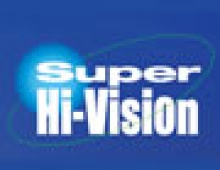
Pulstec Showcases First Holographic Disc Evaluation System
Pulstec demos a holographic disc media evaluation system "SHOT-2000" at CEATEC JAPAN 2005. The SHOT-2000 is based on "collinear holography," a holographic recording and playback technology developed by Optware.
The system has been available on a production-by-order basis since September 2005, but now it is publically showcased for the first time.
The system can be used to evaluate media compliant with "Holographic Versatile Disc (HDV)" standard that has been proposed by Optware. Pulstec has thus far sold evaluation systems for holographic card media (SHOT-1000) and this time the company adds new functions furhter enchance the evaluation of holographic disc media.
The SHOT-2000 supports measurments of bit error rate and signal-to-noise (S/N) ratio after error correction, measurement of various kinds of margins (including those of power, tilt and defocus) and shift-multiplexing recording test.

The Holographic Versatile Disc (HVD) is supported through the HVD Alliance advocated by CMC Magnetics Corporation, FUJI PHOTO FILM CO., LTD., Nippon Paint Co., Ltd., Optware Corporation, Pulstec Industrial Co., Ltd. and TOAGOSEI CO., LTD.
Holographic recording technology
Holographic recording technology records data on discs in the form of laser interference fringes, enabling existing discs the same size as today's DVDs to store more than one terabyte of data (200 times the capacity of a single layer DVD), with a transfer rate of over one gigabit per second (40 times the speed of DVD).
Collinear technology
Optware's exclusive development of the collinear technology is part of its effort to make holographic recording technology practical. A patented technology originally proposed by Optware founder and CTO Hideyoshi Horimai, collinear holography combines a reference laser and signal laser on a single beam, creating a three-dimensional hologram composed of data fringes. This image is illuminated on the medium using a single objective. Using this mechanism, Optware managed to simplify and downsized the previously complicated systems required to generate holograms. Optoware's developments could accelerate the commercialization of the holographic technology.
The HVD Alliance and its members plan to finalize standards for this media in June 2006, with the manufacture of industrial disk drives starting at the end of that year. Consumer models will hopefully hit the marketplace in five to 10 years.
The system can be used to evaluate media compliant with "Holographic Versatile Disc (HDV)" standard that has been proposed by Optware. Pulstec has thus far sold evaluation systems for holographic card media (SHOT-1000) and this time the company adds new functions furhter enchance the evaluation of holographic disc media.
The SHOT-2000 supports measurments of bit error rate and signal-to-noise (S/N) ratio after error correction, measurement of various kinds of margins (including those of power, tilt and defocus) and shift-multiplexing recording test.

The Holographic Versatile Disc (HVD) is supported through the HVD Alliance advocated by CMC Magnetics Corporation, FUJI PHOTO FILM CO., LTD., Nippon Paint Co., Ltd., Optware Corporation, Pulstec Industrial Co., Ltd. and TOAGOSEI CO., LTD.
Holographic recording technology
Holographic recording technology records data on discs in the form of laser interference fringes, enabling existing discs the same size as today's DVDs to store more than one terabyte of data (200 times the capacity of a single layer DVD), with a transfer rate of over one gigabit per second (40 times the speed of DVD).
Collinear technology
Optware's exclusive development of the collinear technology is part of its effort to make holographic recording technology practical. A patented technology originally proposed by Optware founder and CTO Hideyoshi Horimai, collinear holography combines a reference laser and signal laser on a single beam, creating a three-dimensional hologram composed of data fringes. This image is illuminated on the medium using a single objective. Using this mechanism, Optware managed to simplify and downsized the previously complicated systems required to generate holograms. Optoware's developments could accelerate the commercialization of the holographic technology.
The HVD Alliance and its members plan to finalize standards for this media in June 2006, with the manufacture of industrial disk drives starting at the end of that year. Consumer models will hopefully hit the marketplace in five to 10 years.




















